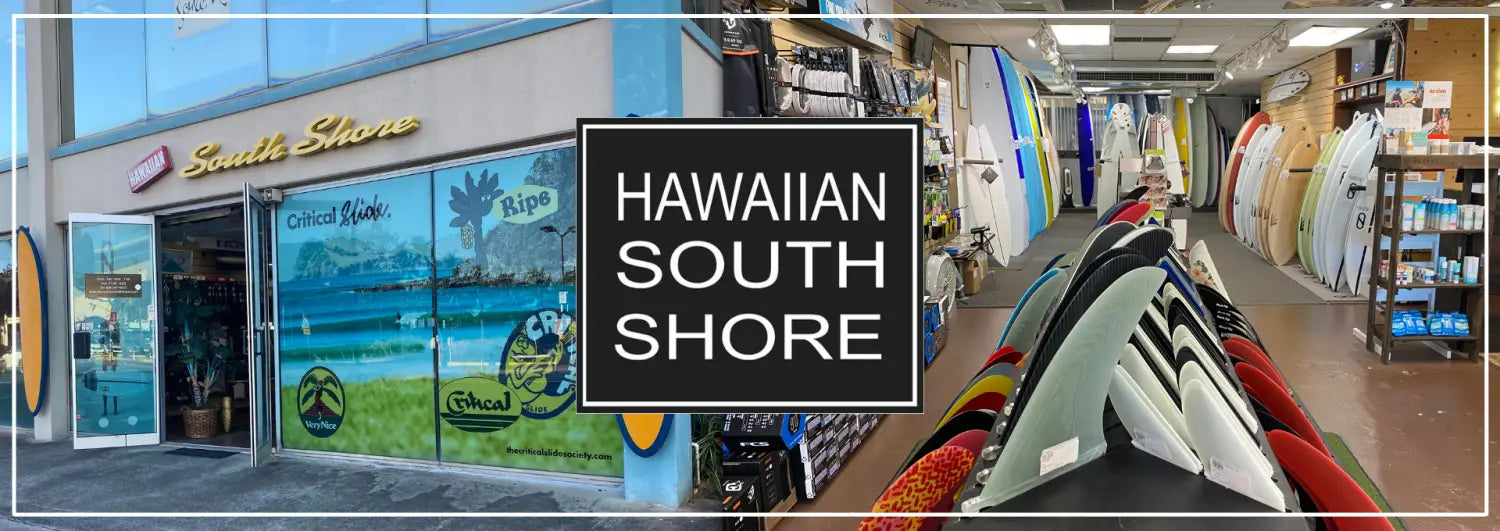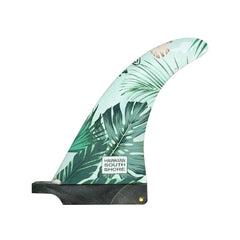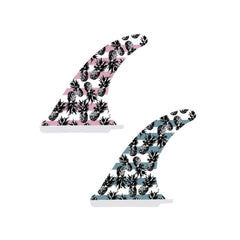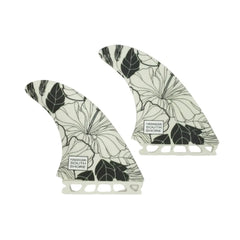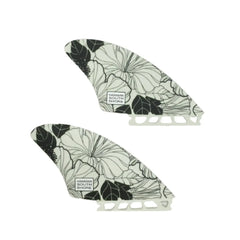Hawaiian South Shore December Newsletter Part 2
Share
The Attempt to Translate Sperm Whale’s Clicks and Find a Way to Communicate With Them
I recently discovered Hakai Magazine, which presents a bunch of interesting content about coastal science. One of the articles that really stood out to me was about project that is working to interpret the sounds made by sperm whales with artificial intelligence and then communicate back to them!
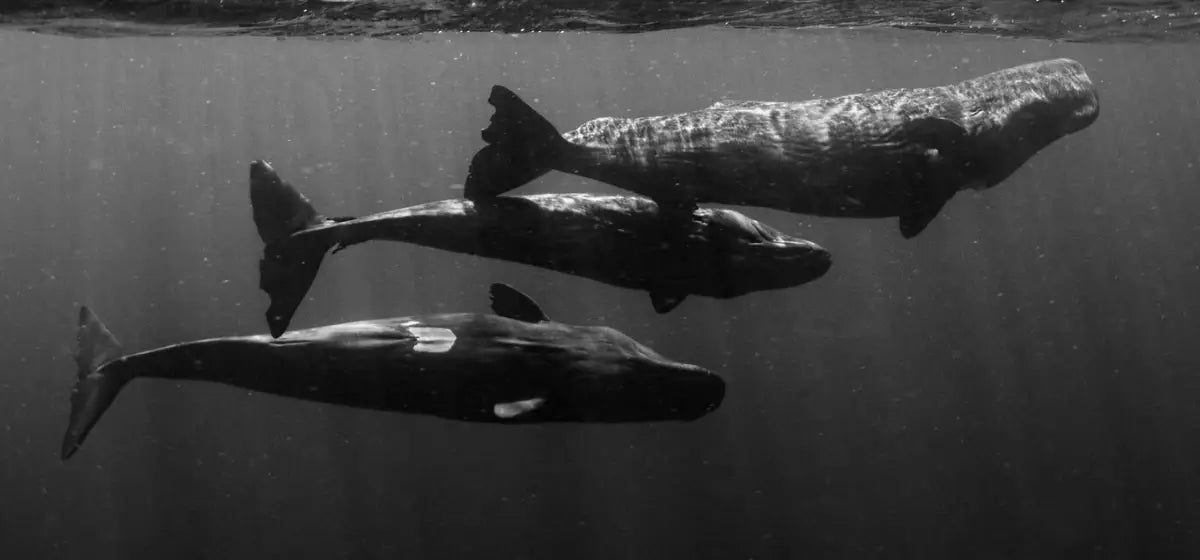
Photo Credit to projectceti.org
Named Project CETI (Cetacean Translation Initiative), the program began in March of 2020, but was inspired by a group of international scientists who were working together at Harvard in 2017. They noticed that the clicking sounds that sperm whales use to communicate are similar to Morse Code and theorized that humans could potentially translate the whale’s clicking into something that we can understand. The idea was just an afterthought and Shafi Glasswater didn’t think anyone would take it seriously. But the thinktank had been developed precisely to come up with unique, out-of-the-box ideas like this one, and soon a group of scientists began developing a framework with which to attempt to translate sperm whale codas through the use of AI.
The biggest question is whether animals actually have language. We know that animals communicate, but whether they actually communicate with a language is still unknown. German marine biologist Karsten Brensing believes that this might be possible, although technically they would need both vocabulary (or at least noises that have a fixed meaning) and a structure for creating sentences. For many years science believed that animals lacked any rules for creating sentence structure, but a 2016 study of a species of bird found that two different calls, when used in a different order, elicited different responses from other birds. This suggests that the meaning of the calls changes when they are uttered in different orders.
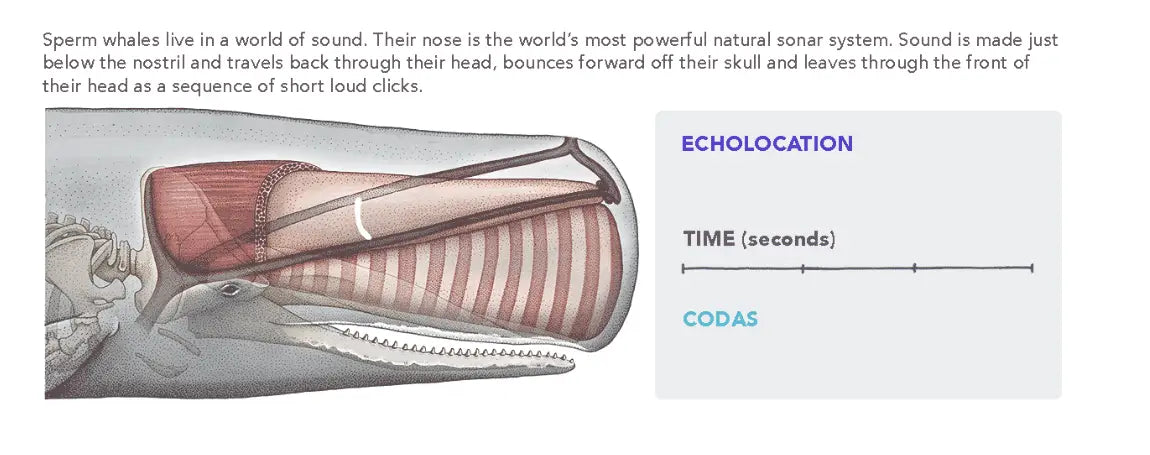
Photo Credit to projectceti.org
A number of animals are vocal learners—that is, they learn to make certain sounds to communicate, rather than simply making innate sounds that are built into them at birth. For example, dolphins use specific whistles to identify themselves, sort of like a name. Sperm whales are an ideal opportunity to try to decode an animal’s language because their clicks are easily translated into zeros and ones. AI programs can use these series of digitized clicks to try to figure out if whales are actually having conversations—and if they are, we could theoretically program a computer to communicate with them through our own series of clicks.
This program is ambitious and will require millions of bits of data, but the scientists involved in the project believe that the rapidly increasing computing power we have at our disposal makes the endeavor at least theoretically possible. How cool is that? In a few years, who says we won’t be able to paddle out on our surfboards with a handheld click-generator and chat with the whales swimming around right offshore!
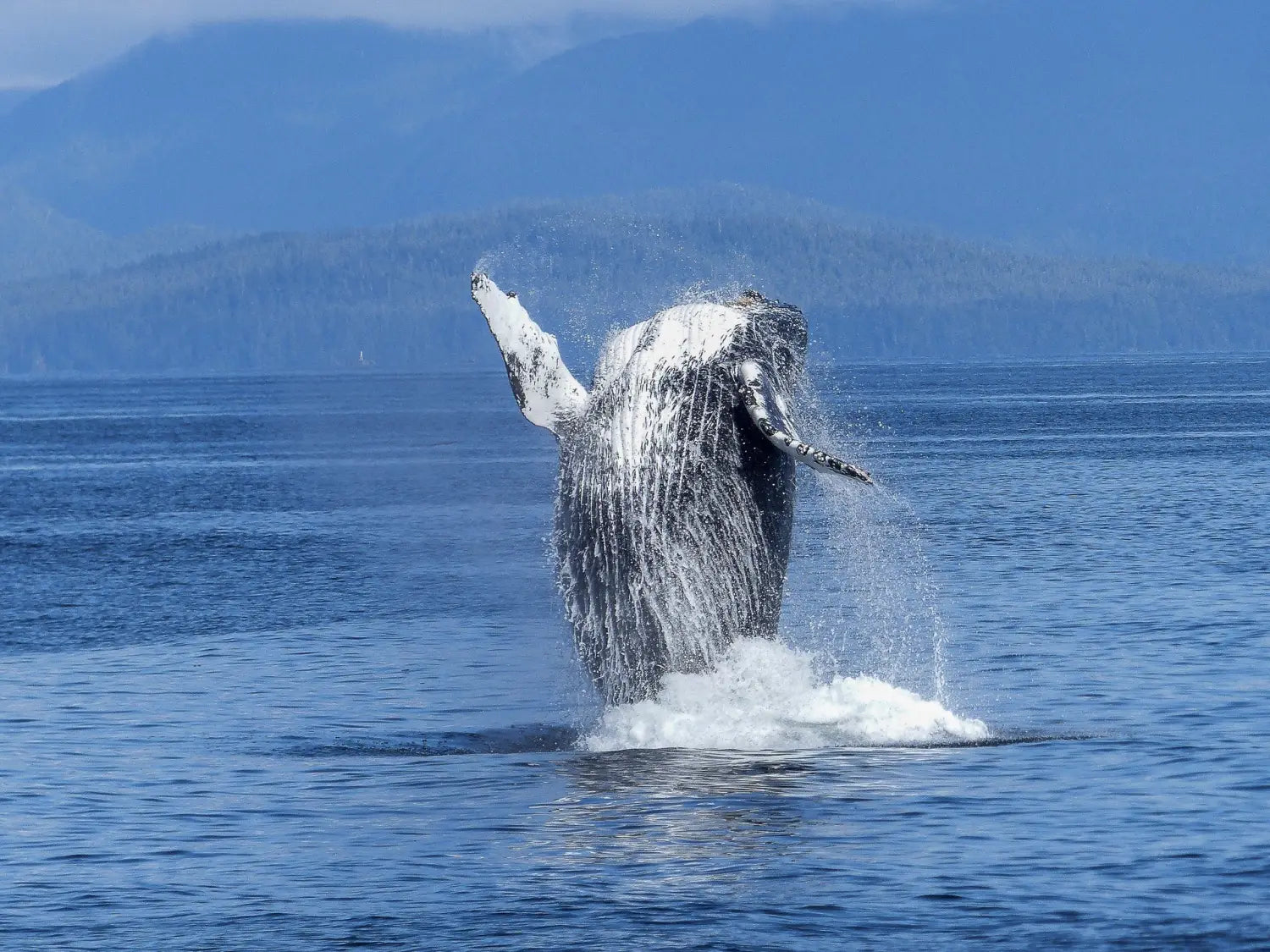
Hawaiian South Shore Member of the Month - Jay Iyomasa
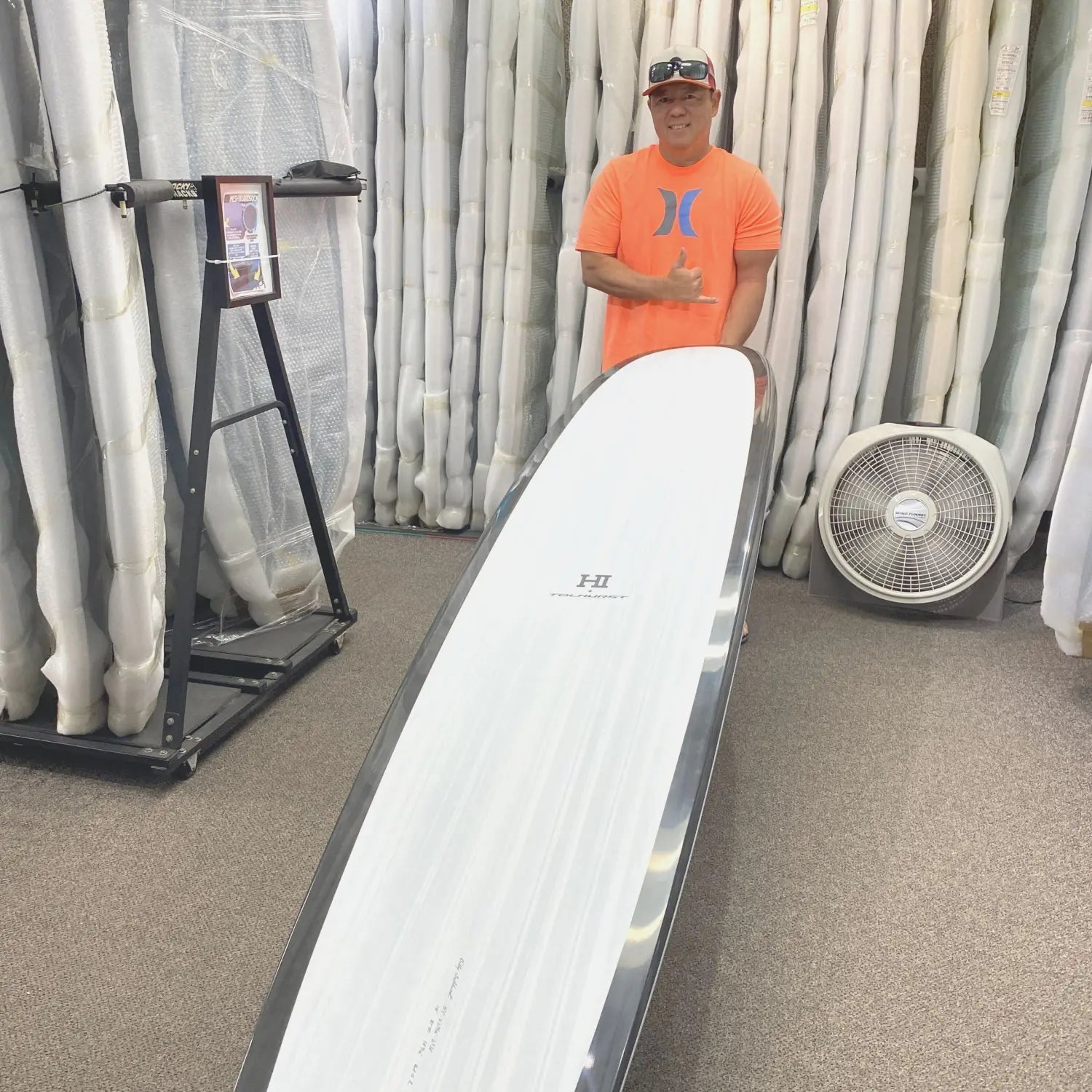
When and why did you initially get into surfing?
I’m a late bloomer. I mostly grew up bodyboarding at Walls. But I wouldn't consider myself an avid beach goer early on. It wasn't until a friend from church who happened to be visiting from California, dragged me out to Canoes that I really got started. Needless to say, I struggled…A LOT! Totally embarrassing, especially because she was so good at it. It’s been 17 yrs since my friend got me stoked on surfing. I’m so glad she introduced me to my favorite hobby. Surfing has changed my life for the better.
Did you have a time period you laid off from surfing? If so, when and why did you start back up?
Yes, I am just getting back from nearly a four year layoff. There were a lot of contributing factors such as two lower back injuries, family priorities, work commitments from my civilian job and military duty that kind of kept me away from the water for so long.
To be quite honest, these stressors took an enormous toll on my physical health. I knew I had to make a change in my lifestyle and made a commitment to improve my overall health and wellbeing. Exercise, eating better and getting back into the water was just what the doctor order and I am so glad to get back to my roots.
What is your favorite thing about surfing?
There are many things I enjoy about being in the water and catching a few waves, but the camaraderie and community that is built at your home break has to be pretty high on the list. Old friends and new faces, we’re all out there together sharing the stoke and enjoying the water. Fellowship at its finest!
I know this may sound a cliche, but surfing is spiritual. I find it especially peaceful surfing late afternoons and watching the sunset from the lineup. It’s unreal. I’m in awe of the canvas that GOD paints each day for us to see.
Lastly, it's also therapeutic, a way to decompress after a long day of work. I ALWAYS feel better AFTER I come out of the water! STOKED!
Where is your favorite place to eat after surfing?
Oh man, that's a loaded question but usually something warm like ramen, pho, or hot pot. However, I don’t discriminate. Poke bowls, rib eye steak, sushi, pizza, meat jun and kalbi will do just fine too!
What other hobbies do you have besides surfing?
Traveling! Staycations! I also enjoy exercising at the gym, bbq’s and camping, volunteering, spending time with my gf, friends, and family. Geeze these questions are like a dating app! j/k
What type of work do you do?
Stressful kind work, j/k. I'm a Registered Nurse and also work for the Hawaii Air National Guard. Go Det 1! Currently, I am serving on a Joint Task Force to help mitigate COVID 19 here in our state.
Tell us about the board you recently purchased from us.
What model and size is it, and how do you like its performance?

My friend from Courts, Ross Morimoto turned me on to Thunderbolt Technology Surfboards. He raved about CJ Nelsons Parallax 9’6’ being so versatile that it could surf small days and get in early on four-five foot town swells. Parallax was top 3 in his quiver. I took my friends advice, and he was spot on! I picked up the Parallax and paired it with a 10.5” Parallax fin.
This board paddles insane! It doesn't take much to get it moving and once it does it very rides fast and it super loose for a 9’6”. It was perfect for getting back into the water following a long layoff and back injury. I also recently purchased the Harley Ingleby HI4 9’1’ carbon in the new black pin color way. I rode the HI4 with HI Tri Fin set up. It's the perfect all-around board if you are looking at surfing a little bigger waves. Very fast and responsive, easy paddle.
Do you have any additional comments?
“Make time” to do the things you love. Life is short and tomorrow isn't promised to us so live life to the fullest.
Traditional Noseriders vs. Involvement Logs
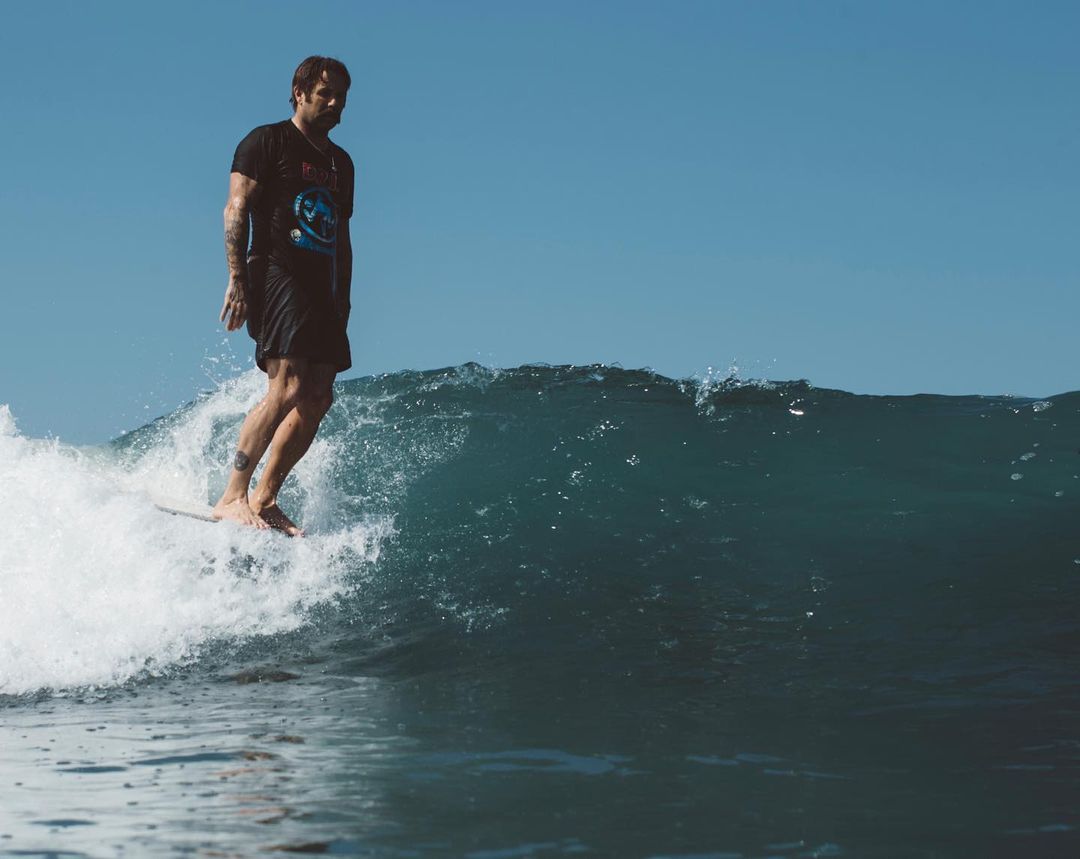
When most people think of traditional noseriders, the board that comes to mind is quite similar to the Bing Nuuhiwa Noserider—and rightly so. After all, that surfboard was considered to be one of the greatest noseriders of all time. Surfboards of this style are typically shaped sort of like a popsicle stick. They have a wide nose and relatively wide tail that is abruptly cut off in a square tail, with a pretty straight outline and a lot of width and volume. They often feature reverse rocker (with a lot of kick in the tail but not much curve in the nose) as well as soft, 50/50 or 60/40 rails throughout and concave under the nose. These surfboards are built to be stable, slow down in the pocket, and lift when being ridden from the front—pretty much exactly what you’d want from a noserider. For this reason, they have become the standard by which other noseriders are measured.
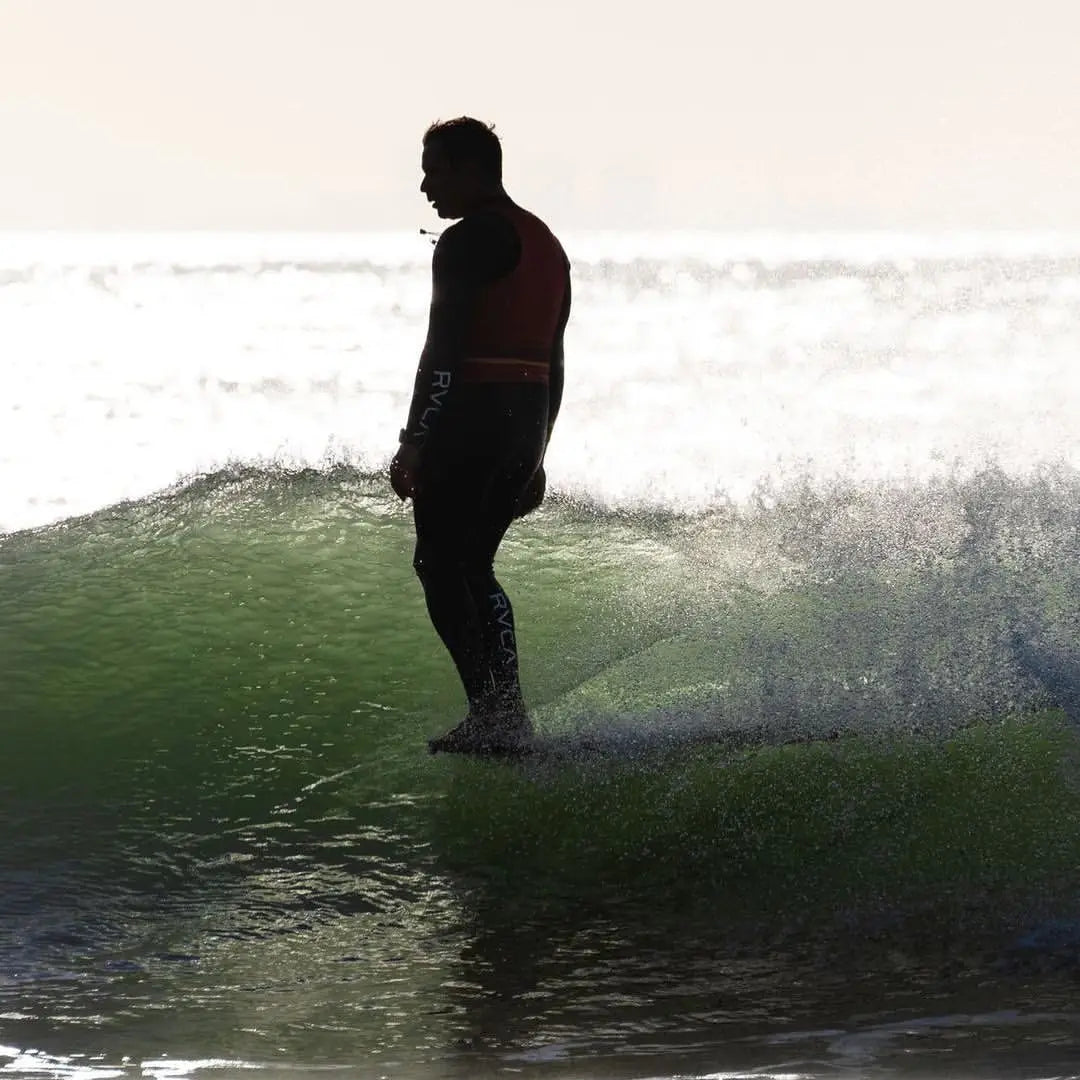
The various design elements that make these traditional noseriders so good for noseriding also come with a few sacrifices. They are typically slow and unwieldy, making them difficult to turn and position in the pocket. In other words, they are quite literally made for noseriding and nothing else. But what about those who want to noseride on a traditional log, but also want to do aggressive turns?
Fortunately for them, a second type of noserider was developed at around the same time as the standard Nuuhiwa-style log—one that was faster and more maneuverable, but that could also still noseride. These boards were called pigs, with a similar but slightly refined version that was popular in Australia in the 1960s referred to as an involvement log.
Pigs/involvement logs have a few design elements that differentiate them from
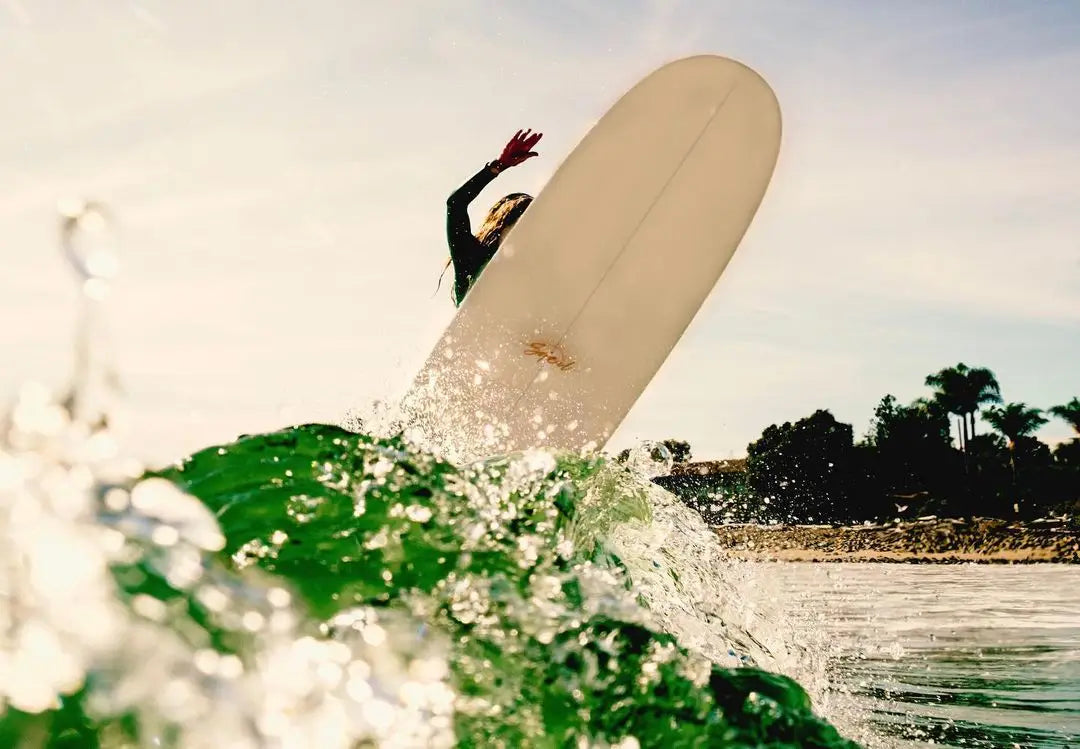
other traditional noseriders. For one thing, they have defined hips that are set well behind the mid-point of the board. In other words, instead of having a wide-point around mid-board (like most shortboards) or a straight-railed outline that is approximately the same width the entire length of the board (like many traditional noseriders), they have their wide point around 12 inches behind mid-board, and then taper all the way to the nose. The nose itself is also quite different than that of a traditional log, as it is quite a bit narrower and more pulled in (due to the aforementioned taper). Traditional pigs also had a rolled bottom contour, soft rails, and a D fin set near to the tail block.
Involvement logs refined this design a bit, with slightly more user-friendly rails and eventually a more high-performance, rake-style fin, but still featured the wide point back and narrow nose, which serves to make a longboard much faster and more maneuverable than the typical popsicle-stick noserider. Amazingly, the involvement logs (and their cousin the pig) could still noseride. The difference is that they must be noseridden deep in the pocket, as opposed to traditional logs, which can sort of be “cheated” and noseridden out onto the shoulder.
Involvement logs have been making a bit of a comeback lately. Harrison Roach has ridden a self-shaped involvement-style log all season on the longboard tour and finished a close second in the title race to logging legend Joel Tudor. The turns that Harrison was doing on his involvement log this year were widely considered to be the best on tour, but he was also noseriding as well as anyone—a testament to the versatility of the design.
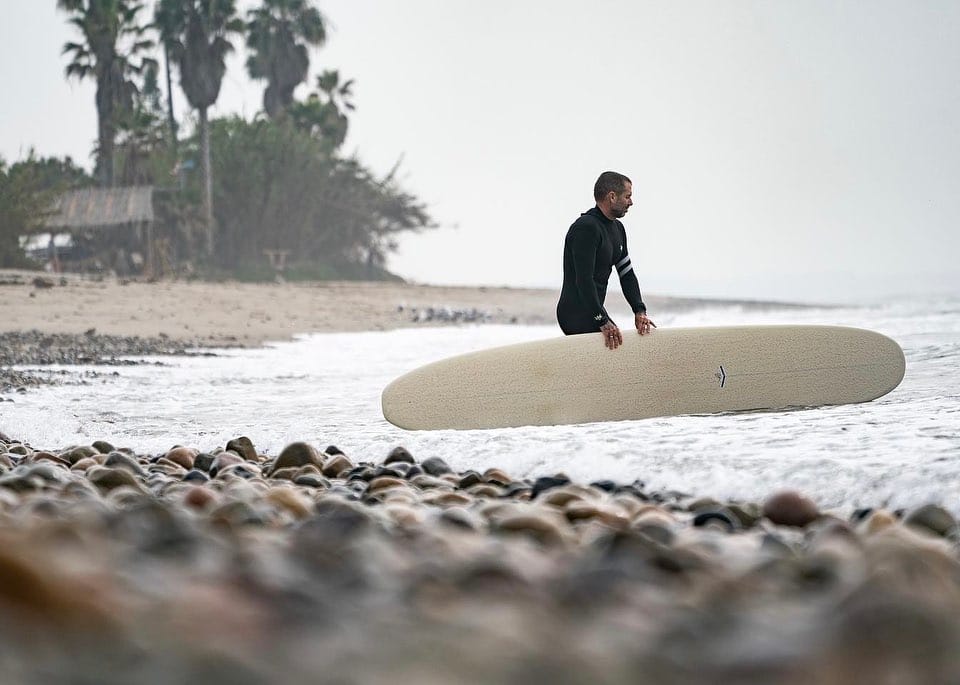
Photo by: @shawnparkin
CJ Nelson has also recently come out with an involvement-style log called the Apex. Featuring the narrower nose and wide hips of traditional involvement logs, the Apex has slightly modernized rails and rocker to make it even more maneuverable while still maintaining that classic log feel.
For anyone who is looking to change up their traditional logging, add a bit of flair, and still be able to noseride, an involvement log is a great option. They aren’t for everyone, as many people get frustrated by the fact that they force you to surf honest, but for those who surf hollow waves and enjoy noseriding deep in the pocket, they provide a feel that is hard to find anywhere else.
New Hawaiian South Shore Fins
Just in time for Christmas, we received a shipment of new fin designs today that we are super excited to share with everyone! Featuring custom outlines designed by the Hawaiian South Shore staff and beautiful hibiscus and pineapple logos that add a bit of local class to your board, the new Hibiscus Performance Rake, Pineapple High-Performance Rake, and Hibiscus Twin Fin and Performance Keep Twin Fins are in shop and available now!
Hibiscus Performance Rake Fin
Our new Hawaiian South Shore Hibiscus performance rake fin is a great all-around longboard fin that can be used either as a single fin or in a 2+1 setup. It is pretty upright for a rake fin, with some kick up near the tip that adds a bit of maneuverability without completely sacrificing hold on the nose. Due to its more upright design, it is a bit more pivoty than some other performance rake fins, allowing the board to have a tighter turning radius. Decked out in our custom HSS hibiscus design, the Performance Rake Fin comes in 6.5-inch, 7.5-inch, and 8.5-inch models, as well as larger 9-inch and 10-inch models that are perfect for use as single fins.
Pineapple High-Performance Rake Fin
The Hawaiian South Shore High-Performance Rake Fin in pineapple design is specifically geared toward hi-fi shredding on your performance longboard. Providing ample drive and increased maneuverability, it is best when paired with your favorite side bites in a 2+1 setup. Designed for floaters, barrels, big turns in the lip, and even airs, the Hawaiian South Shore Pineapple High-Performance Rake Fin comes stock in a 6.5-inch model.
Hibiscus Twin Fins
This twin fin set takes a familiar shape and adds a bit more rake to it to add just a little more drive and control through turns. It works well on your standard fish but is also great on a twin with a pulled-in tail, as well as in a 2+1 setup on a stubby shortboard. Featuring high-quality fiberglass for some extra life through turns and featuring our custom Hawaiian South Shore Hibiscus design, this twin set works with Future boxes and is ready to shred!
Hibiscus Performance Keel Fins
Providing a more traditional feel, but with a bit of modern flair, the Hawaiian South Shore Performance Keel Twin Fin set is great for spicing up your retro fish or smoothing out your turns and adding some drive to your modern twin fin. The long base of the keel design provides added drive and hold, but the modern tips of the fins allow for a more aggressive turning radius. Coming stock with our new, custom hibiscus design, these fins are compatible with Future boxes.


